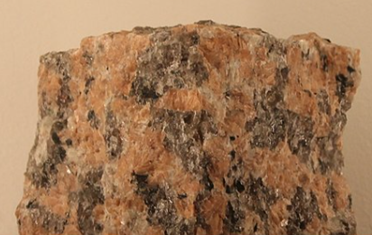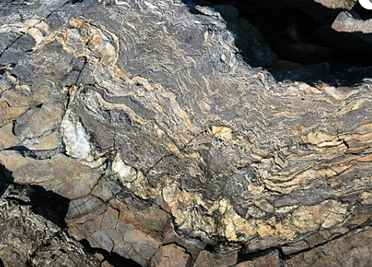
August Kids’ Corner
from the Gale River Cooperative Preschool
Fun Outdoors for Kids of all Ages!
All About Rocks
In This Kids Corner You’ll:
- Learn about the three main types of rocks: sedimentary, igneous, and metamorphic
- Model how rocks are formed using clay, playdough, or another type of moldable material
You’ll need:
- Clay, Play Dough, or another moldable material in at least two colors
Have you ever come across a special rock that you just had to pick up and take home? You’re not alone! Rocks and minerals have fascinated people all over the world for thousands of years. They are beautiful, unique, and each one carries a story about Earth’s history.
What is a rock?
Do you know the difference between a rock and a mineral?
A mineral is a material that has a crystal structure and a constant chemical composition; meaning it’s always made of the same stuff in the same amounts, like a recipe that doesn’t change. For example, quartz is made of two parts oxygen to one part silicone.
A diamond is made from carbon atoms arranged in a crystal.
A rock is a combination of minerals that have been clumped together by pressure, heat, and time. Rocks can be made of one mineral or many. There is no single chemical composition, or “recipe” for a rock.
Types of rocks
There are three main types of rocks: sedimentary, metamorphic, and igneous.
Sedimentary rocks form from bits of larger rocks. Rocks are broken down over time by all sorts of forces including ice, chemicals, running water, wind, human interference, etc. Because of gravity these bits of rock settle in low-lying areas, and at the bottom of rivers, streams, and oceans. Over time they are buried, and the pressure of all of the material on top forces the pieces together into a new rock.
Your Turn:
Your turn to create a sedimentary rock!
Get a few different colors of modeling clay and break lots of pieces from each. Make the pieces a mix of colors and sizes. This represents weathering and erosion happening to larger rocks. Next, put all the pieces in your hand and squeeze them together just hard enough so that it becomes a single piece. That’s your sedimentary rock! Notice how, like in the picture above, you can still make out the individual pieces of old rock in the new one.
Metamorphic rocks are formed when existing rocks are forced so deep underground that they experience intense heat and pressure for a long period of time. Because of the heat and pressure, the rock is molded, folded, squished, and rearranged, like when you roll playdough between your hands. A common metamorphic rock in New Hampshire is gneiss, which you can see in the pictures below.
Your Turn
Your turn to make a metamorphic rock! Your goal is to turn your sedimentary rock into a metamorphic rock with a combination of heat and pressure. You can sit on it (wrap it in something first!), squeeze it in your hands or arm pit, etc. Once it’s warm, roll it around in your hands or knead it on the table. Notice how you can still see the original colors, but they’ve been blended together more smoothly than your sedimentary rock.
Igneous rocks are formed by magma cooling and solidifying. You can think of magma as liquid rock beneath the Earth’s crust. When magma comes to the Earth’s surface it cools, and liquid rock becomes solid igneous rock. This can happen quickly at the Earth’s surface, as you may have seen in volcanic eruptions, or slowly underground. (Lava is magma that has reached the surface of the Earth!)
Granite is a type of igneous rock that forms underground. When magma gets close enough to the Earth’s surface to cool off, it starts to slowly solidify, and granite is formed. Granite is a hard and durable rock commonly used in building, and there is a lot of it in New Hampshire; hence the term “The Granite State”. Because the different minerals that make up granite turn from liquid to solid at different temperatures you can often see large mineral crystals in granite rocks.
It’s difficult to model the making of an igneous rock with clay or playdough, but imagine melting your metamorphic rock and then taking it off the heat to re-solidify!
Next time you’re out hiking or playing and see a cool rock, study it! See if you can gather any clues about whether it’s an igneous, sedimentary, or metamorphic rock!
Thanks to our partner, the Gale River Cooperative Preschool in Bethlehem, for helping our area parents get kiddos outside for fun no matter the time of year.














